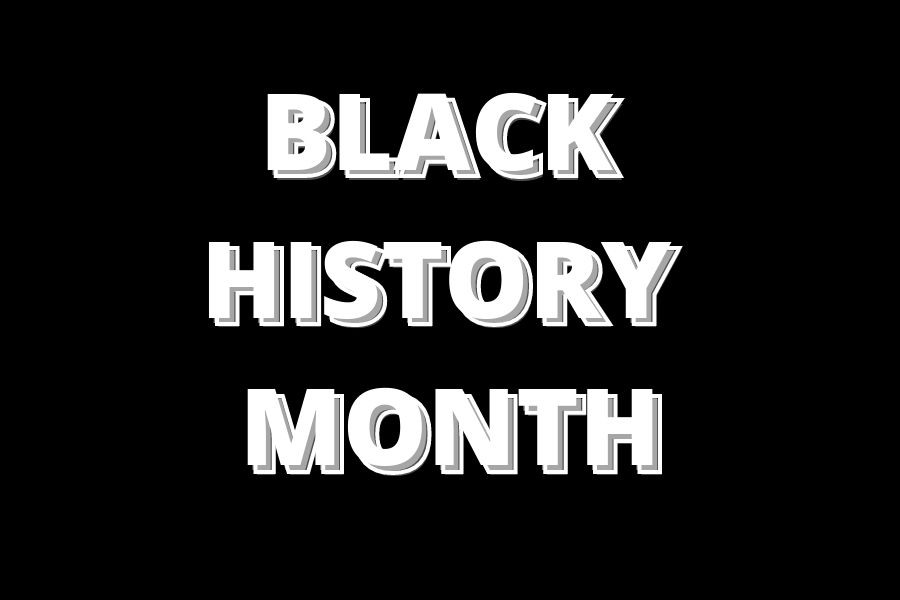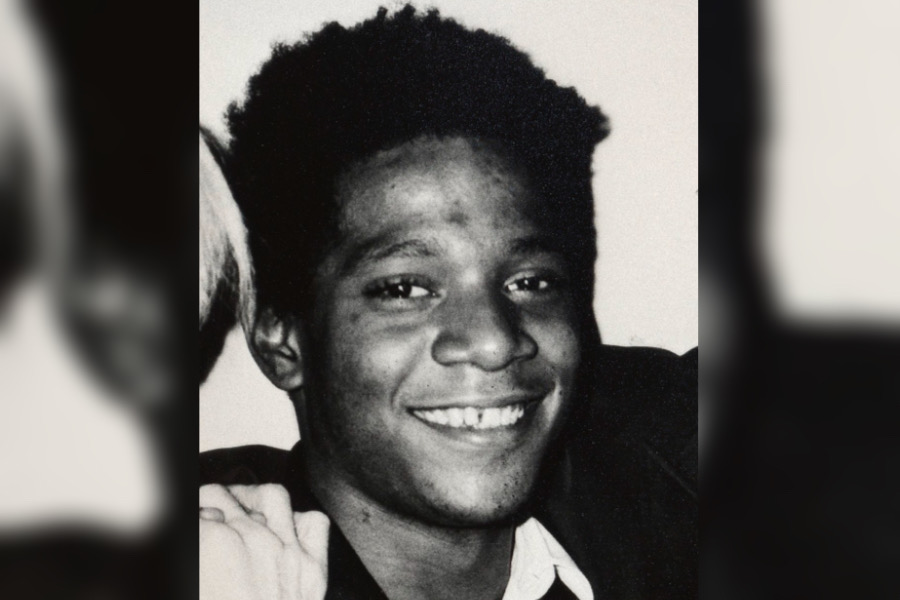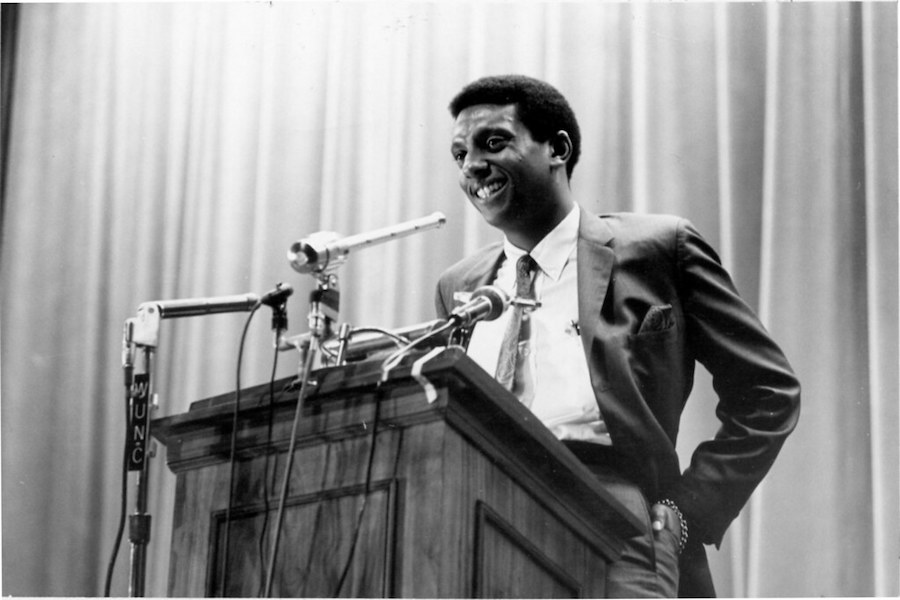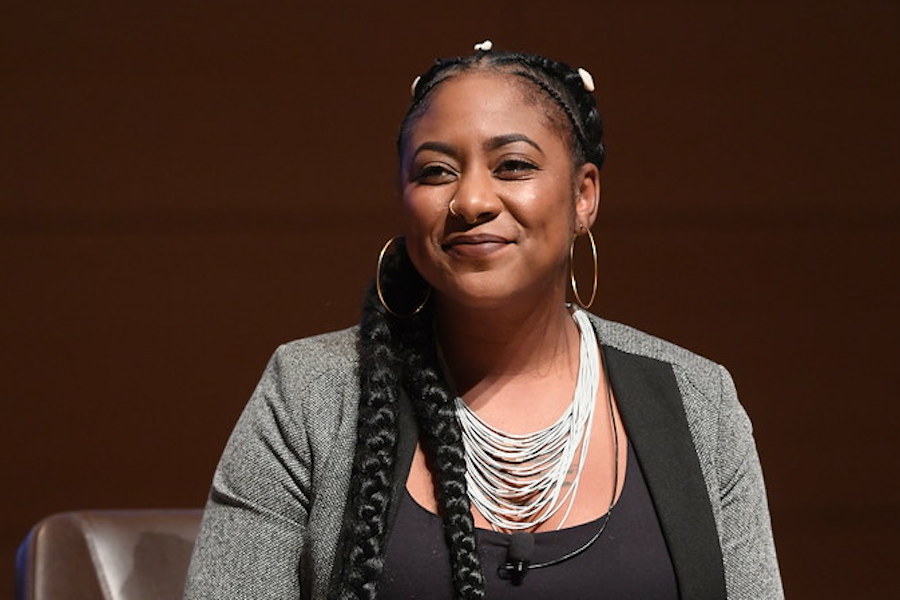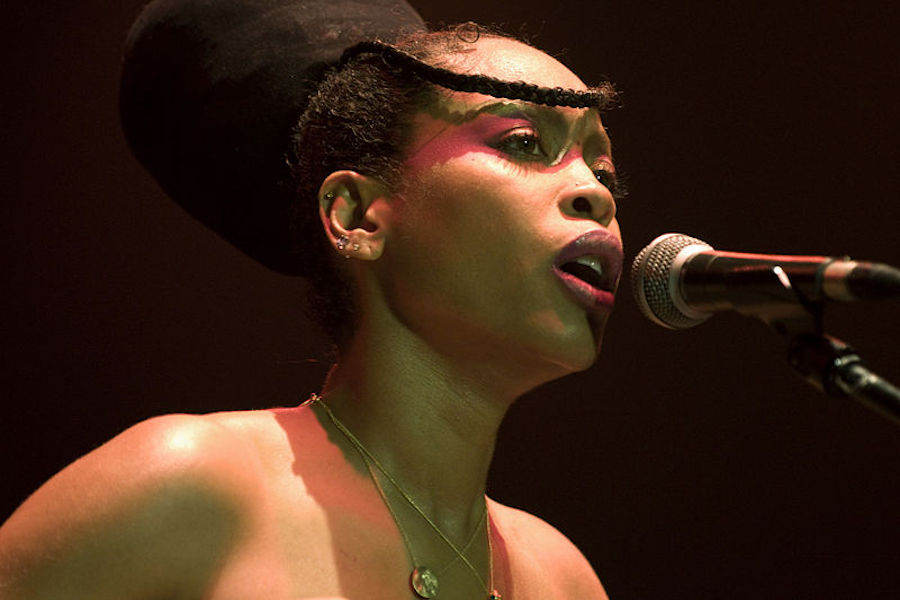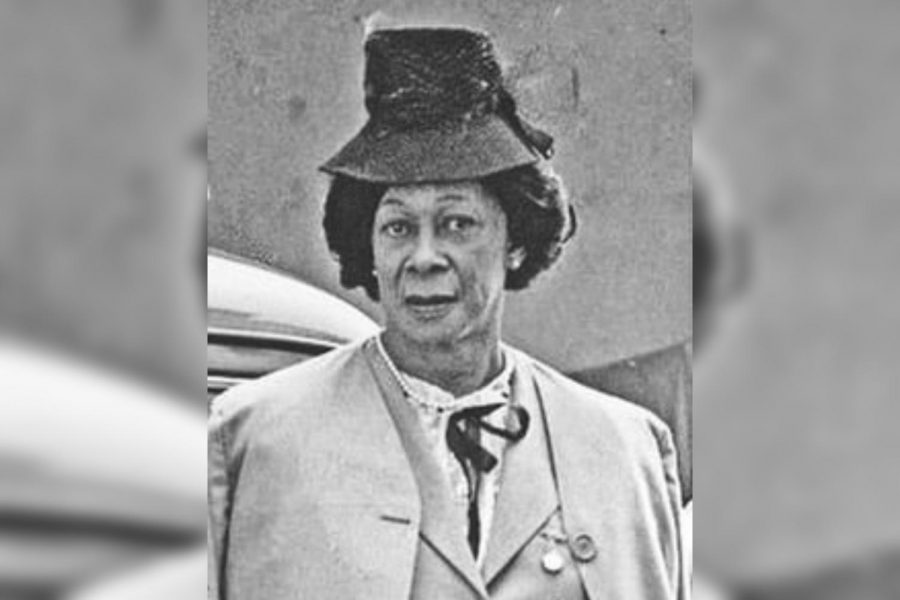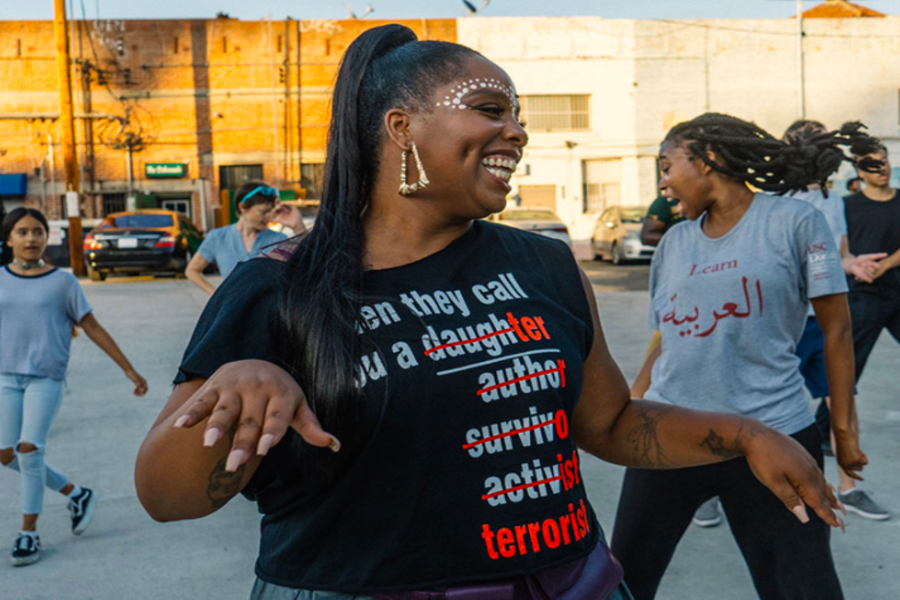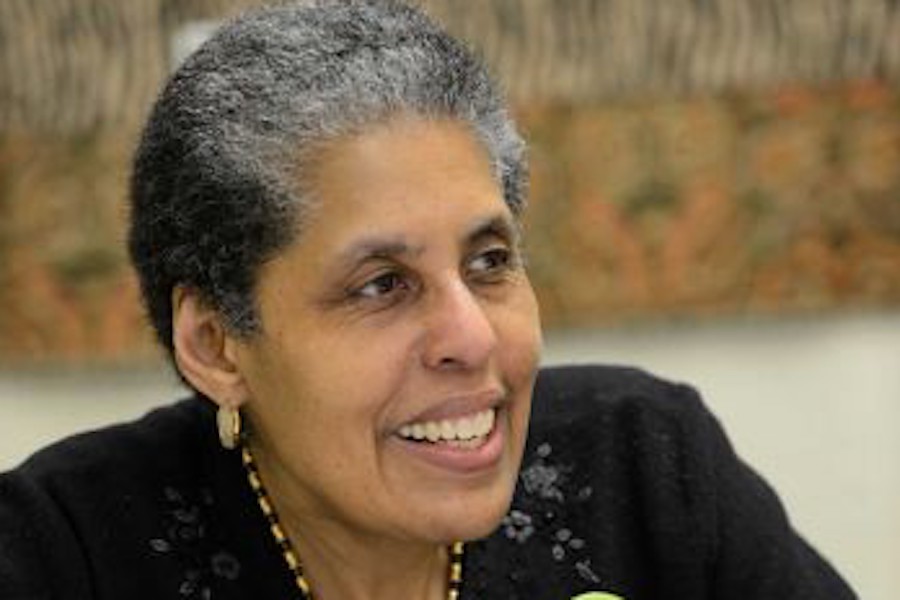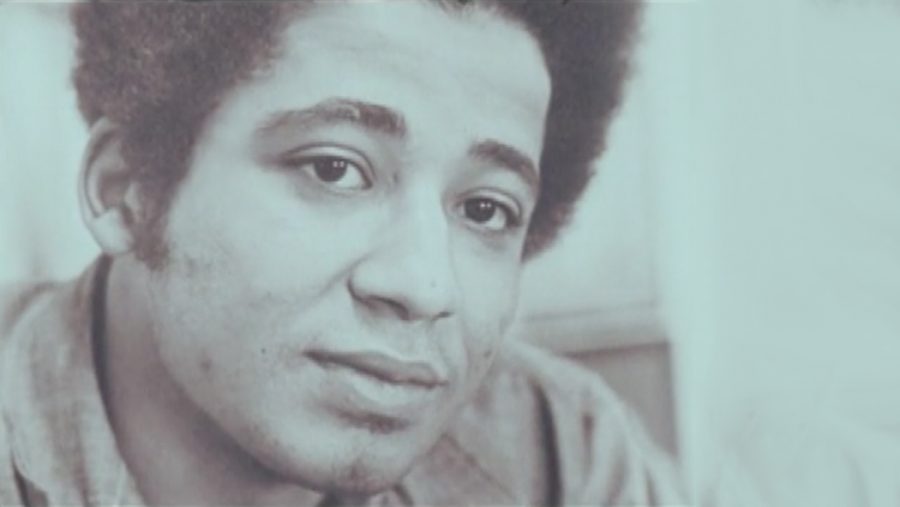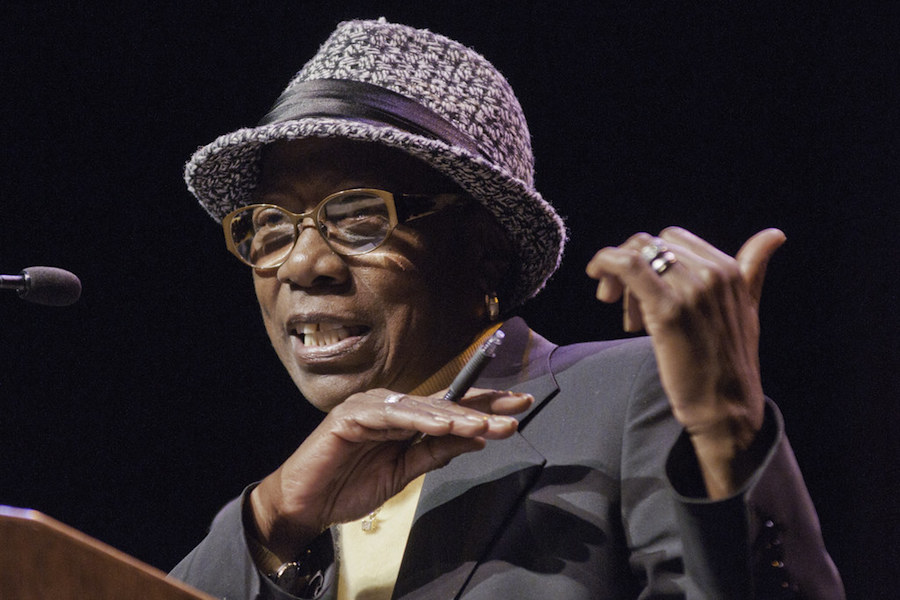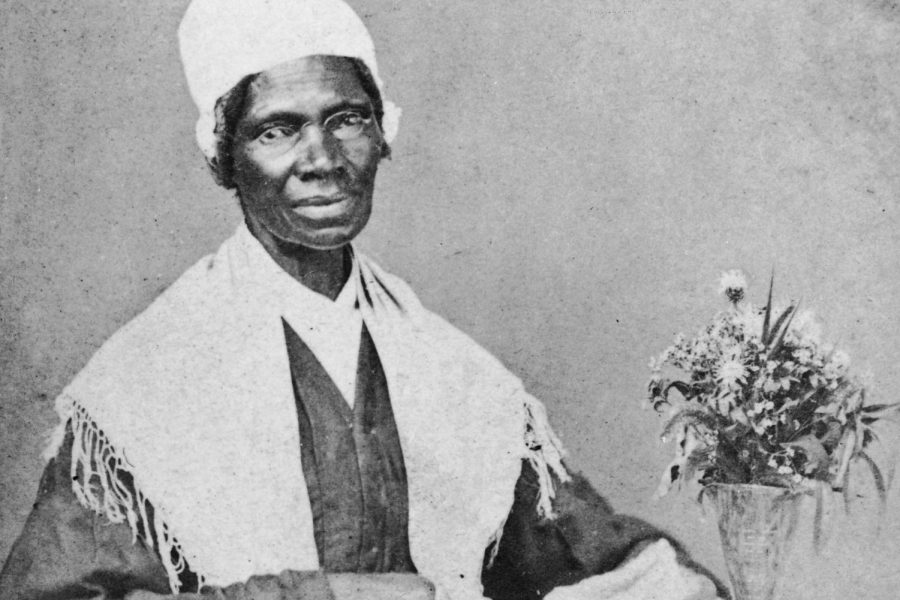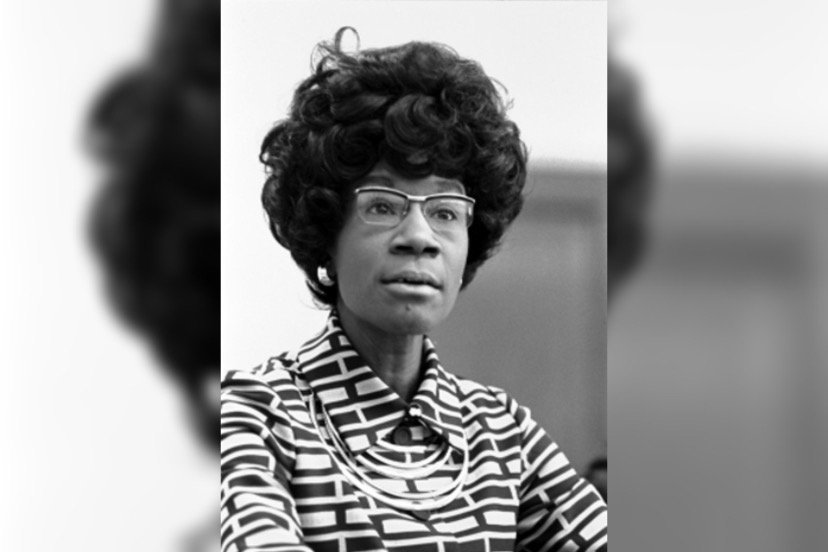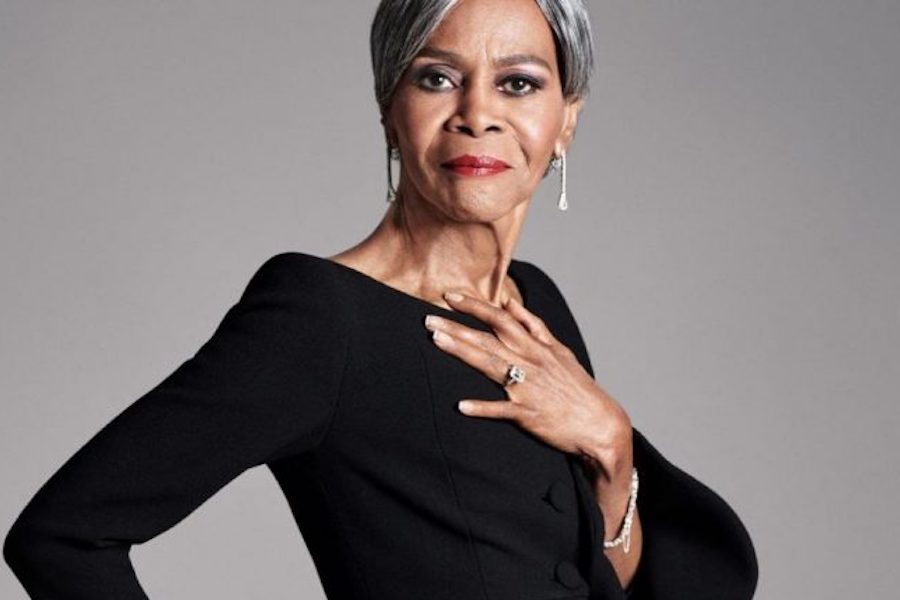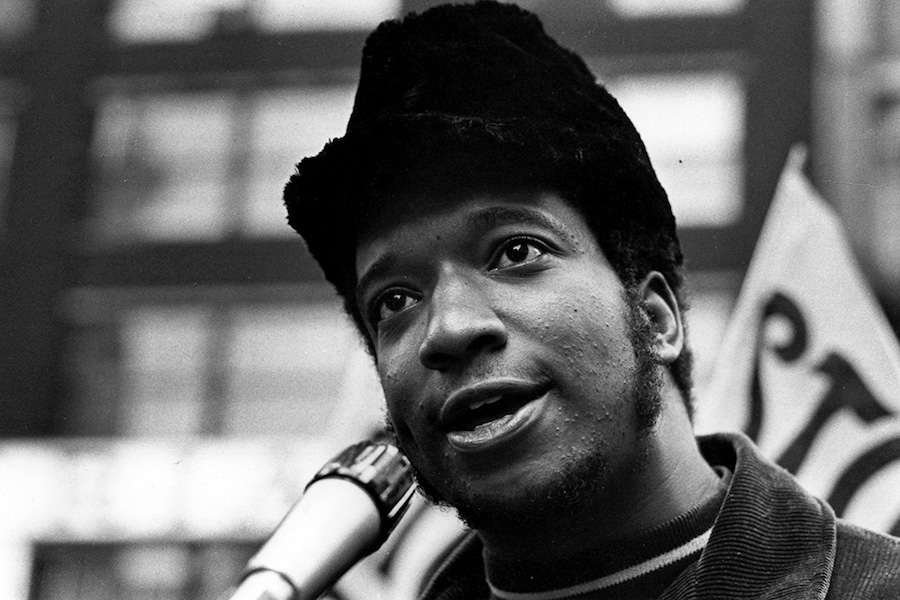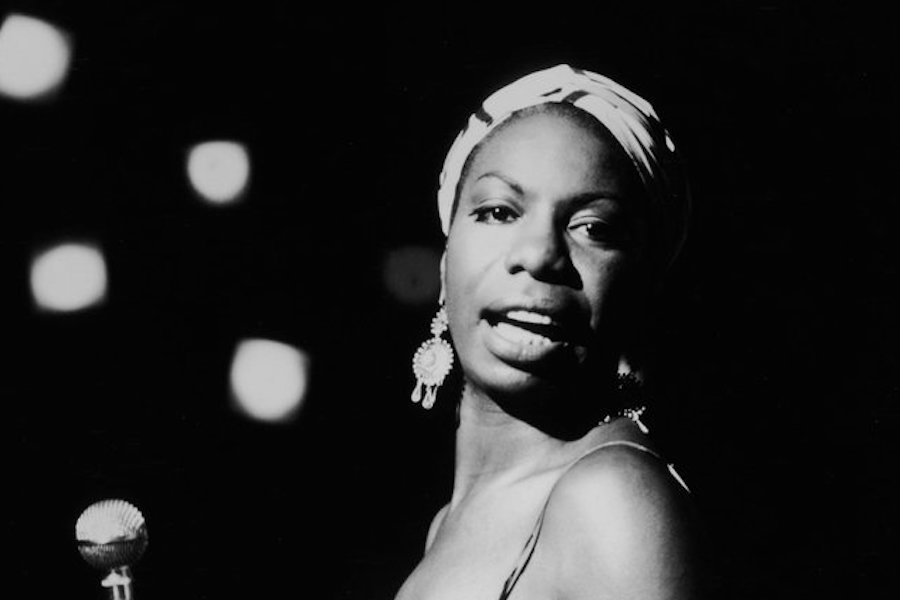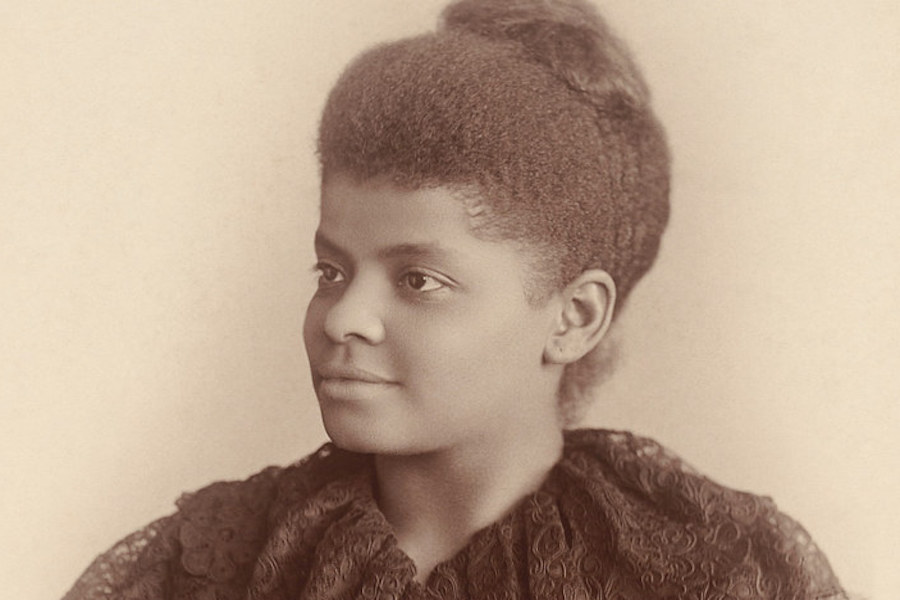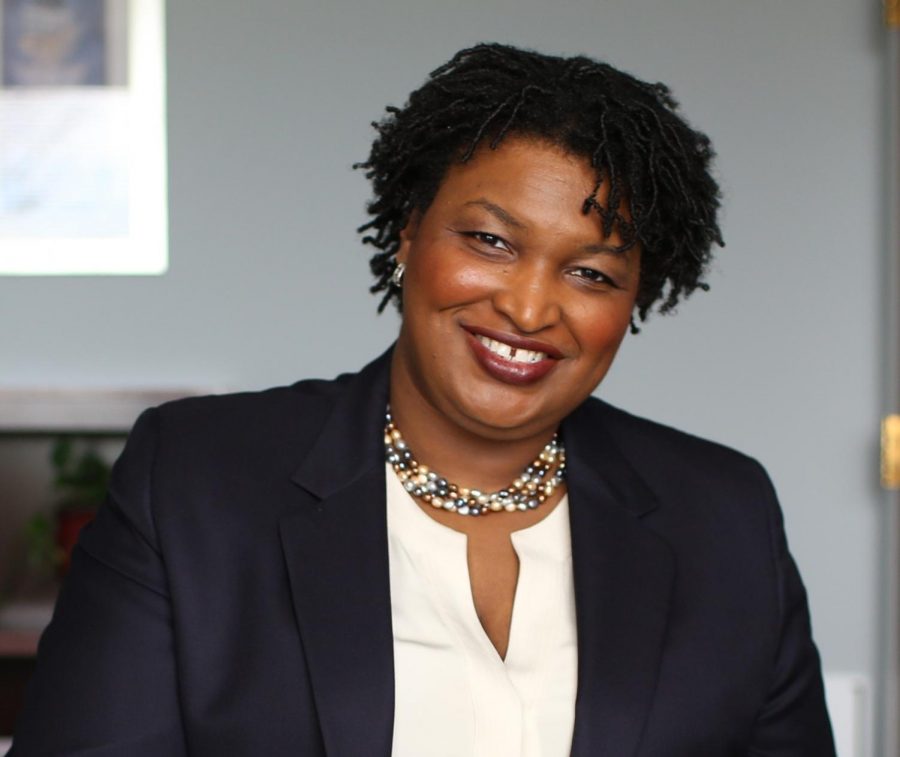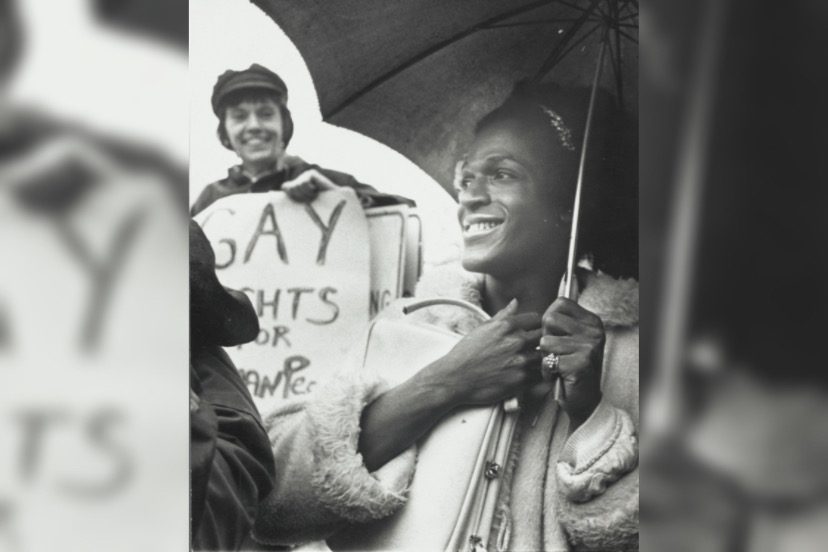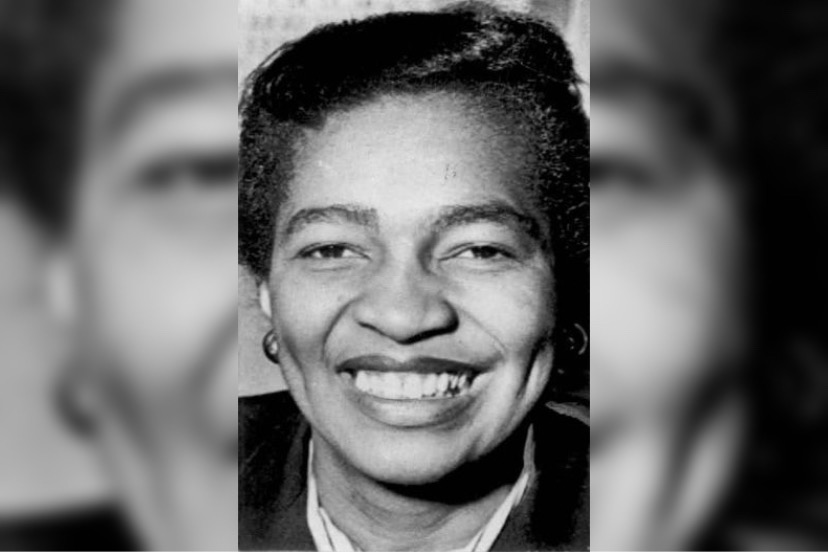Black History Month
February 28, 2021
Throughout Black History Month, Wingspan will be highlighting various Black historical figures and their impact on the world. Check back to read each day of Feb.
Jean-Michel Basquiat was an artist who blended social commentary, expressive graffiti designs, oil and acrylic paintings, memorable poetry, and much more, and would go on to become one of the most influential contemporary artists of all time. A common and well-known motif of Basquiat’s is a crown, which he used in his works to celebrate Black people as royalty, kings, and saints. Many of his works also criticize the systems of racism, colonialism, and capitalism.
Jean-Michel Basquiat
Born 1960 in Brooklyn, New York, Jean-Michel Basquiat was an artist who blended social commentary, expressive graffiti designs, oil and acrylic paintings, memorable poetry, and much more, and would go on to become one of the most influential contemporary artists of all time.
Basquiat grew up with his sisters and mother, who was an advocate for his interest in art from a young age. However, his childhood presented many challenges, and so he ended up dropping out of high school and leaving home by the age of 17. His Haitian and Puerto Rican heritage would impact the content and styles of his art later on.
With the loss of a home, Basquiat turned to streets and abandoned buildings as places of living. Teaming up with graffiti artists Shannon Dawson and Al Diaz, he started a graffiti campaign to paint messages around the subways and walls.
After graffiti began to gain more attention from the art community, Basquiat received recognition for his work, and ended up producing a public exhibition in “The Times Square Show.” His work frequently featured Black historical figures, musicians, athletes, and writers, as he blended motifs from different cultures with references to pop culture.
A common and well-known motif of Basquiat’s is a crown, which he used in his works to celebrate Black people as royalty, kings, and saints. Many of his works also criticize the systems of racism, colonialism, and capitalism.
In 1981, Basquiat began collaborating with celebrity Andy Warhol, and the two became representatives of the contemporary art movement. In 1985, Basquiat appeared on the cover of the New York Times Magazine as a figurehead of the movement.
Basquiat passed away at the age of 27 in 1988 due to a drug overdose. Despite his short career, he made over 1500 drawings and about 600 paintings, as well as many sculptures and mixed media pieces, and has been accredited for expressing his experience as an Afro-Latino through his art.
Kwame Ture, also known as Stokely Carmichael, was a Black nationalist, socialist Pan-Africanist, anti-capitalist and revolutionary. He was a leading figure in the Black Panther Party and the Student Nonviolent Coordinating Committee, as well as a leader of the socialist political party All-African People’s Revolutionary Party.
Kwame Ture
Born in Port of Spain, Trinidad and Tobago in June of 1941, Kwame Ture, also known as Stokely Carmichael, was a Black nationalist, socialist Pan-Africanist, anti-capitalist and revolutionary. He was a leading figure in the Black Panther Party and the Student Nonviolent Coordinating Committee, as well as a leader of the socialist political party All-African People’s Revolutionary Party.
When he was a boy, he and his family moved to The Bronx in New York. After high school, Carmichael went on to attend Howard University in Washington D.C. While in college, he signed onto the Freedom Rides, travelling with other activists on buses throughout the South to challenge segregated public transportation. The police targeted and brutalized the activists, and Carmichael was repeatedly arrested during the Rides, spending his 20th birthday in the Parchman Penitentiary in Mississippi.
After the Democratic National Convention failed to recognize the Mississippi Freedom Democratic Party, Carmichael began to develop all-Black political organizations, including the Lowndes County Freedom Organization. He spoke in support of Black Power through speeches and writings.
In 1968, Ture married South African singer Miriam Makeba, and moved to Ghana in the same year. One of the reasons Ture moved there was because the FBI targeted him, as they did many Black revolutionaries. A year later the two both moved to Guinea, where they would separate and divorce in 1973. It was in Guinea that Ture changed his name from Stokely Carmichael to Kwame Ture in honor of two early Pan-Africanist, Kwame Nkrumah and Sékou Touré. Ture began campaigning internationally for revolutionary socialist Pan-Africanism. Nkrumah was a mentor of Ture’s and he devoted the last 30 years of his life to the organization as an organizer and Central Committee member, though many regarded him as the leader of the A-APRP.
Later, Ture married Marlyatou Barry, a doctor from Guinea. Together they had a son, Bokar Carmichael, and then divorced in 1982. Ture was diagnosed with prostate cancer in 1996, and after two years of battling it he died in 1998 at the age of 57 in Conakry, Guinea. He said that the cancer “was given to me by forces of American imperialism and others who conspired with them.”
Ture has three books, Ready for Revolution: The Life and Struggles of Stokely Carmichael and Stokely Speaks: From Black Power to Pan-Africanism, and Black Power: The Politics of Liberation. He also appeared in The Black Power Mixtape 1967-1975 and Black Panthers 1968 short film documentary.
Opal Tometi is a human rights activist who has been fighting for justice since her early years. From being one of the three creators of the Black Lives Matter movement to creating an electronic hub to unite the Black community, Tometi is a force of nature with her voice and continues to fight for equality today.
Opal Tometi
As one of the three female creators of the Black Lives Matter movement, Opal Tometi is a human rights activist who works to vocalize race, gender justice, and immigration issues.
Born into a Nigerian immigrant family in Phoenix, Arizona, on August 15, 1984, Tometi was exposed to numerous social injustices from a young age. From witnessing the crisis at the US-Mexico border to the growing homeless population in her hometown, Tometi soon discovered her purpose in activism.
While still in school, Tometi worked as a community organizer, where she used her voice on the debate team and led student council groups. Around her community, she worked to fight for homelessness in Phoenix. However, this was just the beginning for Tometi.
At the age of 27, Tometi acquired the position of Executive Director at the Black Alliance for Just Immigration (BAJI) where she worked with families during the 2010 Haitian Earthquake to keep them united. She also voiced her beliefs on unjust deportations with audiences ranging from the United Nations to the Atlantic Ideas Summit.
As Tometi continued her career in advocating for the voiceless, it was the acquittal of George Zimmerman, charged for Trayvon Martin’s murder, in 2013 that prompted Tometi to create an online Black Lives Matter platform.
But Tometi did not stop there. She went on to create Diaspora Rising, a hub to unite the Black community and advocate for the strengthening of it. After speaking in several conferences and being a board member of multiple organizations, Tometi was named one of TIME 100’s Most Influential Women in 2013 and is displayed in the Smithsonian National Museum for African American History and Culture. She continues to gain recognition today as she was awarded the 2020 Freedom of Flame Award from civil rights icons, but her work to fight for justice is far from over.
Screenshot from Brower Youth Awards Youtube
17 year old Isra Hirsi, the daughter of Congresswoman Illhan Omar, is an environmental activist who focuses on the need for the climate movement to make more room for Black Muslim youth leaders, as well as acknowledge the various intersections that contribute to climate change, such as the impact of capitalism, white supremacy, and colonialism on the climate. “Creating more space for those with marginalized identities in the climate space is necessary for inclusive solutions,” Hirsi said in Vox.
Isra Hirsi
Born in 2003 in Minneapolis, MN, Isra Hirsi is an environmental activist, and she advocates for the inclusion of more Black Muslim youth leaders within the climate movement, as well as the movement’s need to acknowledge the various intersections that contribute to climate change, including the impact of capitalism, white supremacy, and colonialism on the climate. Daughter of Congresswoman Illhan Omar and Ahmed Hirsi, Hirsi co-founded and co-directed the U.S. Youth Climate Strike in 2019.
At age 12, Hirsi was already active in seeking racial and social justice, participating in protests at Mall of America for Jamar Clark, a Black man who was shot and murdered by police. During her freshman year of high school, Hirsi joined the environmental club and began her involvement in climate activism.
On March 15 and May 3 in 2019, Hirsi organized hundreds of student-led strikes across the United State after having co-founded and co-directed the U.S. Youth Climate Strike in January of the same year. She was also a recipient of various awards, including the Brower Youth Award and the Voice of the Future Award. In 2020, Hirsi was named on BET’s Future 40 and Fortune’s 40 Under 40 Government and Politics lists.
In addition to being interviewed for various publications, Hirsi has written many articles as well, including for Bulletin of the Atomic Scientists, Grist, Vice, and Jacobin, with articles such as “Adults won’t take climate change seriously. So we, the youth, are forced to strike”, “The climate movement needs more people like me”, “Isra Hirsi: ‘You can read all the books you want, but reading books is not going to save lives”, and “A Generation Is Learning How to Strike”.
You can follow Hirsi on social media, including her Twitter (@israhirsi), Instagram (@israhirsi), and TikTok (@israhirsi).
Born Malcolm Little in 1925, Malcolm X, also known as el-Hajj Malik el-Shabazz, was a Black Muslim minister and human rights activist, known for his efforts in the civil rights movement of the 60s.
Malcolm X
Born Malcolm Little in 1925, Malcolm X, also known as el-Hajj Malik el-Shabazz, was a Black Muslim minister and human rights activist, known for his efforts in the civil rights movement of the 60s. His work in the Black liberation movement, his efforts to promote communism, and his dedication to Black empowerment have made him one of the most influential activists of the 20th century.
After a childhood spent in foster care, going in and out of juvie, in 1946, Malcolm X was sentenced to ten years in prison. While serving time he joined the Nation of Islam and became one of the biggest leaders of the organization after being released on parole in 1952. After being released, he started advocating for his more radical beliefs, in which he often criticized the emphasis on non-violence that came with the more mainstream civil rights movement. His ideologies revolved around re-connection to African heritage, and Black empowerment. His name, X, was in response to the fact that he had no knowledge of his ancestral African heritage.
A controversial figure, X was often surveilled by the FBI for his supposed links to communism as well as his speeches that were made on the behalf of the Nation of Islam. Known for his charismatic personality and his public speaking skills, he was a stark critic of American liberalism and often said that there was more to Black liberation than the right to vote, emphasizing the issues of Black identity and independence. His work helped change the terms used to refer to Black citizens, bringing the shift from politically incorrect terms to “Black” and “Afro-American.”
In 1965, Malcolm X founded the Organization of Afro-American Unity, a Muslim organization dedicated to promoting the interests of Black people all around the world, moving from civil rights to human rights. This was one of the last acts of advocacy he was able to carry out before his assassination in February of 1965 while lecturing at a university in Harlem.
Alicia Garza is a queer social justice activist who co-founded the Black Lives Matter Global Network alongside Patrisse Cullors and Opal Tometi. Garza is also the principal of the Black Futures Lab.
Alicia Garza
Born on January 4, 1981, in Oakland, California, Alicia Garza is a queer social justice activist who co-founded the Black Lives Matter Global Network alongside Patrisse Cullors and Opal Tometi. Garza is also the principal of the Black Futures Lab. She grew up with her single mother and uncle before her mother got remarried.
Throughout her high school years, Garza was involved in local activism voicing the need for sex education on birth control. Following high school, Garza attended the University of California, San Diego. There, she wasted no time combatting issues as she joined an organization dedicated to fighting for higher pay for the janitors at UCSD. Garza also helped organize a university-wide Women of Color Conference in 2002. After her last semester in college in 2002, Garza obtained a Bachelor of Arts in anthropology and sociology.
In 2008, Garza married Malachi Garza, a fellow organizer and activist. Garza began her post-graduate life in 2009 as executive director for People Organized to Win Employment Rights/POWER in the Bay Area. With her success in that position, in 2011, Garza stepped up to Right to the City Alliance/RTTC as board chair.
After working with various organizations for several years, Garza co-founded the Black Lives Matter movement with Patrisse Cullors and Opal Tometi in 2013. After seven years, the movement remains prevalent across the country through protests and social media to raise awareness of racism towards Black people in America.
In 2018, Garza also developed the Black Futures Lab, which works with Black communities to mold them into powerful and responsible ones to build Black power across the country. With her position as the Strategy and Partnerships Director for the National Domestic Workers Alliance, Garza works to bring about equality in every aspect to domestic workers.
While Garza is far from being done, she received multiple honors with the work she has accomplished over the years. Some include the Jeanne Gauna Communicate Justice Award from the Centre of Media Justice, Fortune Magazine’s 2016 list of the World’s Greatest Leader, Community Change Agent at the 2016 Black entertainment Television’s Black GIrl Rock Awards, and 2016 Glamour Women of the Year Award.
Garza also released a book in 2020 called The Purpose of Power: How We Come Together When We Fall Apart.
Known as the Queen of Neo-Soul, Erica Abi Wright, known professionally as Erykah Badu was born on Feb. 26, 1971 in Dallas, TX. Badu is known for her music’s mix of modern soul, R&B, hip-hop, pop, African music, and more.
Erykah Badu
Known as the Queen of Neo-Soul, Erica Abi Wright, known professionally as Erykah Badu was born on Feb. 26, 1971 in Dallas, TX. Badu is known for her music’s mix of modern soul, R&B, hip-hop, pop, African music, and more.
Badu was raised by her mother, godmother, and two grandmothers alongside her siblings Eevin and Nayrok, and was exposed to the arts since she was young as her mother and godmother both acted at the local theater. By seven years old, Badu had learned to play the piano and at 14 years old was freestyle rapping on a local radio station.
Badu attended Booker T. Washington High School for the Performing and Visual Arts in Dallas, studying theater and dance. While in school, Badu changed the spelling of her name from Erica to Erykah, with the “kah” meaning inner light in Egpytian as she wanted to shed her “slave name”, and then she changed Wright to Badu, which means “manifest light and truth” in Arabic.
Badu then went on to attend Grambling State University starting in 1989, and she rapped over beats made by her cousin Robert “Free” Bradford, who studied music production in Chicago, Illinois. Her singing career began when Bradford’s production inspired her to sing instead of rap, and the two worked together as Erykah Free until Badu got an solo artist offer from a Universal Records division called Kedar Entertainment.
In 1997, Badu had her first child, Seven. Seven years later, Badu had her second child, Puma Sabati, and then had her third child Mars Merkaba in 2009.
In the same year as Badu’s first child was born, she put out “On & On”, her first single and debut album in 1997. The single topped the Billboard’s R&B chart, and her album Baduizm rose to #2 on the pop album charts and went triple platinum. Both “On & On” and the album won Grammy awards, with the song also winning a Soul Train Music Award and the album earning an American Music Award, two NAACP awards, and three Soul Train awards. She has also acted in multiple films, such as The Cider House Rules in 1999 and House of D in 2004. Additionally, Badu is a certified doula, third degree Reiki master, and a certified holistic health practitioner.
Badu’s music can be streamed on Apple Music, Spotify, Youtube, Tidal, and Pandora.
Lucy Hicks Anderson was a Black transgender pioneer, American socialite, chef, and prohibition-era entrepreneur. From a young age, Anderson knew she identified as a girl and insisted on wearing dresses and going by the name Lucy. Before the term “transgender” was coined, Lucy was taken to a local physcian by her mother and the physician suggested that Lucy be brought up as a girl and she was.
Lucy Hicks Anderson
Born in 1886 in Wandy, Kentucky, Lucy Hicks Anderson was a Black transgender pioneer, American socialite, chef, and prohibition-era entrepreneur. From a young age, Anderson knew she identified as a girl and insisted on wearing dresses and going by the name Lucy. Before the term “transgender” was coined, Lucy was taken to a local physcian by her mother and the physician suggested that Lucy be brought up as a girl and she was.
At age 34, Anderson married her first husband, Clarence Hicks, and made a name for herself as a successful chef in Oxnard, California. She hosted dinner parties in her community, won many awards for her cooking skills, and donated much of the money she earned to charity.
WIth the money that she had earned from her experience as a chef, Anderson opened up a speakeasy and brothel that was rather well-known. Her popularity in the community made it possible for her to own and operate her business successfully. After divorcing her first husband in 1929, she married retired soldier, Rueben Anderson in 1944.
In 1955, a venereal disease outbreak was traced back to Anderson’s brothel. The local doctor insisted that all women be physically examined and demanded that Anderson be checked as well. When the doctor had come to know that Anderson was originally assigned as male at birth, he targeted her, outing her and spreading said information to the public. Both she and her husband were tried by the federal government and Anderson was charged with perjury and fraud.
When asked to speak in court, Anderson stood her ground and fought for justice.
“I defy any doctor in the world to prove that I am not a woman,” Anderson said. “I have lived, dressed, and acted just what I am—a woman.”
Both she and her husband had to face jail time while Anderson had to face an extra ten years of probation. Once released from prison, Anderson came to know that she was banned from staying in Oxnard and moved to Los Angeles where she resided until she passed away in 1954.
Anderson will forever go down in history as the first Black trans woman to defend herself and her identity in court. She serves as a role model to many even today as her story encourages everyone to speak their truth.
Screenshot from National AIDS Memorial Youtube
Zahara Green is a transgender rights activist, prison abolitionist, environmentalist, and currently studying Pre-law at Clayton State University. They are also the executive director of a Black Trans-led non-profit organization that serves the transgender and gender non-conforming community in Georgia called TRANScending Barriers Atlanta. Green also works as the Board President of the prison abolitionist organization Black & Pink, Inc. and as a consultant for the National PREA Resource Center, working to end sexual abuse in confinement.
Zahara Green
Born and raised in Atlanta, Georgia, Zahara Green is a transgender rights activist, prison abolitionist, environmentalist, and currently studying Pre-law at Clayton State University. They are also the executive director of a Black Trans-led non-profit organization that serves the transgender and gender non-conforming community in Georgia called TRANScending Barriers Atlanta. Green also works as the Board President of the prison abolitionist organization Black & Pink, Inc. and as a consultant for the National PREA Resource Center, working to end sexual abuse in confinement.
Green left home at 16 years old, and was arrested for shoplifting at 19. They faced an all-white jury in a rural county in Georgia, and pled guilty, as they said they knew would be convicted for being non-binary and transgender. Green was forced into a male prison and while incarcerated, was targeted and assaulted by other incarcerated people and by the officers. Under the guise of “protective custody”, they were locked in solitary confinement for most of their time in prison. Many incarcerated transgender, nonbinary, and gender non-conforming people were put in Special Housing Units by the police officers, which often meant locking them in solitary confinement. A study by Black & Pink, Inc. reported that out of nearly 1,200 LGBTQ+ people who were formerly incarcerated, 85 percent of them had to spend time in solitary confinement.
While incarcerated, Green began their advocacy for transgender, nonbinary, and gender non-conforming people, fighting the injustices they and others incarcerated faced daily by filing grievances, wrote letters, and began working on impact litigation. After their release, Green went into retail management, experiencing challenges within the workforce along the way, as many formerly incarcerated people do. They then established TRANScending Barriers Atlanta, became Board President of Black & Pink, Inc., and consultant for the National PREA Resource Center. Green continues to work towards the liberation of Black transgender, nonbinary, and gender non-conforming people, fighting to make sure they all have a place in the world.
Born in Montgomery, Alabama in 1939, Colvin was one of the pioneers of the civil rights movements of the 60s. Though she has often been left out of stories mentioning the fight for desegregation, Colvin’s court case, and her subsequent work for the N.A.A.C.P., had an undeniable impact on the civil rights movement.
Claudette Colvin
On March 2, 1955, a young Black woman refused to give up her seat to a white man. She demanded that it was her constitutional right to remain right where she was, and in turn, was arrested and jailed for her act of rebellion.
That young woman was then fifteen-year-old Claudette Colvin, who refused to give up her seat 9 months before Rosa Parks famously did so.
Born in Montgomery, Alabama in 1939, Colvin was one of the pioneers of the civil rights movements of the 60s. Though she has often been left out of stories mentioning the fight for desegregation, Colvin’s court case, and her subsequent work for the N.A.A.C.P., had an undeniable impact on the civil rights movement.
Just after Black History Month 1955, Colvin’s decision to remain in her seat was a result of hearing stories about Harriet Tubman and other Black leaders. In her memoir, she recalls feeling empowered by the conversations her classmates have been having about Jim Crow laws and injustices against Black citizens.
“My head was just too full of Black history, you know, the oppression that we went through,” Colvin said in an interview with NPR. “It felt like Sojourner Truth was on one side pushing me down, and Harriet Tubman was on the other side of me pushing me down. I couldn’t get up.”
Colvin was arrested for refusing to give up her seat and became one of the plaintiffs in Browder v.Gayle, the court case that eventually overturned bus segregation laws in Alabama.
Colvin has attributed her absence in conversations on desegregation to colorism and classism. Rosa Parks was older, held a job, and had a lighter complexion than Colvin- something she says was easier to swallow for white Americans.
This incident wasn’t an isolated moment of activism for Colvin either- she had many dreams of going into politics. Speaking of the times she grew up in, Colvin reminds people that it wasn’t just adults fighting the fight for justice, but many teenagers and younger people as well.
In 1956, she gave birth to her son, at the age of sixteen. Between her young motherhood and her participation in the Browder v. Gayle case, it was incredibly difficult for Colvin to land a job. She eventually landed a job as a nursing aide and worked as a nurse for 35 years. On May 20, 2018, Clovin was awarded a Congressional Certificate and an American flag.
Author, activist, and educator Patrisse Cullors has dedicated her life to fight for the end of violence against Black people in America and empower communities. She is one of the co creators of Black Lives Matter and has developed programs to unite the Black community throughout her life. Along with her activism, she also as a professor at Prescott College where developed the Social and Environmental Arts Practice MFA program.
Patrisse Cullors
While born in Los Angeles, California on June 20, 1983, Patrisse Cullors an activist, abolitionist, believing in Marxism and fighting for Black liberation. Cullors grew up in San Fernando Valley, a low-income community in California. During her high school years, Cullors brought to light her queer identity, left her hometown of Los Angeles, and graduated from Grover Cleveland High School in Reseda, California.
From Cullor’s early years she began a life of activism through her involvement in the Bus Riders Union, a civil rights organization that focused on the discriminatory Los Angeles public transportation system. This was just the beginning for Cullors, as she gained a Fulbright Scholarship to attend college and was given the Mario Savio Young Activist Award in 2007.
After graduating from the University of California, Los Angeles in 2012 where she received her degree in religion and philosophy, Cullors wasted no time putting her talent to use, as produced a performance art piece, STAINED: An Intimate Portrayal of State Violence, to bring awareness to the violence and abuse in the jail system. This creation inspired Cullors to create her non-profit Dignity and Power Now, an organization dedicated to fight for healing justice for those in the prison system and their families.
In 2013, she co-founded the Black Lives Matter movement, and she was the one to generate the famous social media hashtag, #BlackLivesMatter. With the other co-founders, Opal Tometi and Alicia Garza, BLM was created to end violence against Black people and is a movement that continued being prevalent today across the nation.
In a Huffington interview in 2014, Cullors revealed the role social media played on the movement.
“Social media has changed the game,” Cullors said. “On a daily basis, every moment, Black folks are being bombarded with images of our death. And after a while that does something to your psyche. It’s literally saying, ‘Black people, you might be next. You will be next.’”
With her production of POWER: From the Mouths of the Occupied, Cullors continued her work in voicing the current power of the police in relation to Black people. She also co authored When They Call you a Terrorist: A Black Lives Matter Memoir and worked in the Coalition to End Sheriff Violence in L.A. Jails as the executive director. In the Ella Baker Center for Human Rights Cullors, she sits as a board member and today works a professor at Prescott College where developed the Social and Environmental Arts Practice MFA program.
With all her works, Cullors has received numerous national recognitions including NAACP History Maker, Justice Award from National Center for Lesbian Rights, Civil Rights Leader for the 21st Century, and Defender of the Dream Award from the AFL-CIO Executive Council Committee on Civil and Human Rights.
Barbara Smith is a Black lesbian feminist and socialist. Since the early 1970s, Smith has been active as an author, scholar, activist, and leader of the Black feminist thought. In 1974, she co-founded the Combahee River Collective, a Black lesbian feminist socialist organization that argued that both feminism led by white women and the Civil Rights movement were not addressing the needs of Black women, particularly Black lesbian women.
Barbara Smith
Born on Nov. 16, 1946 in Cleveland, Ohio, Barbara Smith is a Black lesbian feminist and socialist. Since the early 1970s, Smith has been active as an author, scholar, activist, and leader of the Black feminist thought. In 1974, she co-founded the Combahee River Collective, a Black lesbian feminist socialist organization that argued that both feminism led by white women and the Civil Rights movement were not addressing the needs of Black women, particularly Black lesbian women.
Raised by her grandmother and aunt after her mother died when she was nine years old, Smith’s family stressed the importance of learning and education throughout her life. After high school, Smith went to undergraduate school at Mount Holyoke College, graduating in 1969 and going on to get her master’s degree in 1971 at the University of Pittsburgh. Smith then went to University of Connecticut to get her doctorate, but did not complete her dissertation.
In 1973, Smith taught her first class at Emerson College, which covered Black women’s literature. 1974 was when Smith co-founded the Combahee River Collective in Boston, Massachusetts, and the group would be most known for its Combahee River Collective Statement, which was written by Smith, her twin sister Beverly Smith, and Demita Frazier and explored the intersection of racism, sexism, misogyny, heterosexism, and more, arguing in favor of Black women’s liberation and ability to be open and unapologetic about their LGBTQ+ identities in the midst of their social justice work.
With the Collective disbanding in 1980, in the same year Smith went on to co-found the first U.S. book publisher for women of color by women of color, Kitchen Table: Women of Color Press. Smith not only helped to make a space for Black women in the press, but particularly broke ground by creating a place for Black lesbian women and their voices.
Since her first class in 1973, Smith has been a visiting professor, writer in residence, freelance writer, and lecturer at various universities, colleges, and research institutions throughout the years. In 2005, she ran for and was elected to the Albany, New York Common Council, and while on the city council focused on youth violence prevention. That same year, she was also nominated for a Nobel Peace Prize, and has received many other honors throughout the years, including the Stonewall Award for Service to the Lesbian and Gay Community in 1994.
Smith continues her work today as scholar and activist, teaching at colleges and universities, writing essays, reviews, articles, short stories, and literary criticisms, of which have been published in The New York Times Book Review, The Black Scholar, Ms., Gay Community News, The Guardian, The Village Voice, Conditions, and The Nation.
The Combahee River Collective Statement, authored by Smith, Beverly, and Frazier, can be read here. Smith also has a book, The Truth That Never Hurts: Writings on Race, Gender and Freedom and has edited many others through Kitchen Table, including Home Girls: A Black Feminist Anthology.
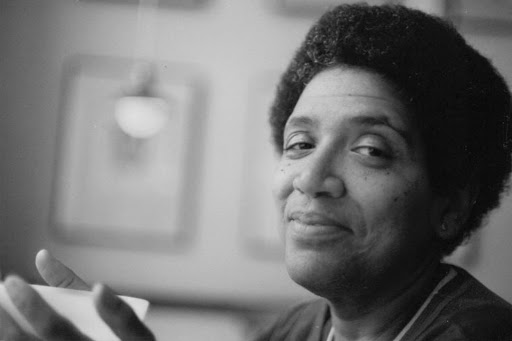
Audre Lorde
Self-described as Black, a lesbian, a mother, a socialist, a warrior, and a poet, Audre Lorde was born in February of 1934 and grew up in Harlem, New York with immigrant parents from the West Indies.
Her childhood was filled with art and poetry, as her talents showed through at a young age. Her work was published in Seventeen magazine before her seventeenth birthday. Inspired by anything and everything, Lorde often spoke about the impact poetry had on her early life.
Lorde went to Hunters College as an undergraduate before going to Columbia University for graduate school. After graduating she taught for most of the 60s, before moving to work as a librarian. It was during this time in which academia started to have an impact on Lorde’s life and career. Lorde’s contributions to gender studies, queer theory, race in academia, and intersectional theory are prominent and have left a lasting impact on these fields to this day.
Her poetry was held in great esteem, and she often used her voice to fight the marginalization of LGBTQ+ citizens and Black women. She was a social activist whose work helped bring a voice to the experiences of Black women and lesbians.
“My sexuality is part and parcel of who I am, and my poetry comes from the intersection of me and my worlds,” Lorde once said.
In the 80s Lorde turned her focus to uplifting the voices of Black feminists everywhere, creating Kitchen Table: Women of Color Press with friend and colleague Barbara Smith. In addition to her work in the states, Lorde created the Sisterhood in Support of Sisters in South Africa an organization to bring attention to the plight of apartheid in South Africa.
Before passing in 1992, Lorde spent the majority of her career fighting norms and pushing back against the status quo. Her very existence as a Black queer woman in academia pushed barriers, and she dedicated her life to pushing for more seats at the table for women of color. You can find her collective works here.
Rock The Bells – Tony Felgueiras
Known as one of the most influential singers and rappers of her generation, Lauryn Hill was born on May 25, 1975, in East Orange, New Jersey. After having her first child with Rohan Marley in 1997, Hill produced her first solo album, The Miseducation of Lauryn Hill.
Lauryn Hill
Known as one of the most influential singers and rappers of her generation, Lauryn Hill was born on May 25, 1975, in East Orange, New Jersey. Hill grew up around a musically-inclined family with her dad performing at weddings, her mother playing the piano, and her brother playing numerous instruments. With so much music around her from her early years, Hill quickly grew an interest in music, particularly soul music of the 1960s and 1970s.
Hill was one of the contestants on Showtime at the Apollo at the age of 13, where she sang Smokey Robinson’s “Who’s Loving You.” This was only the beginning of her musical career, as she later joined The Fugees, a hip hop group created by two young immigrants from Haiti. Hill was a crucial asset to the group, as she worked as a vocalist, rapper, and songwriter. The Refugees released their first album in 1994 called Blunted by Reality but did not gain the group the big break they were hoping for. However, Hill was individually recognized for her vocals in the album and her rapping specifically in “Some Seek Stardom.” After exploring the mixture of reggae and R&B, they released their second album, The Score, in 1996, and it gave the group a huge presence in the world of music. Within the first year, the album sold six million copies and rose to the top of the R&B charts and Billboard 200.
After having her first child with Rohan Marley in 1997, Hill produced her first solo album, The Miseducation of Lauryn Hill. Her album was an instant success, with it being in the Billboard 200 for four weeks and the Billboard R&B for six. With her music, Hill was nominated for ten Grammy Awards in 1999, historically the most a woman had ever been nominated for in a year, and took home five of them: Album of the Year, Best R&B Album, Best Female R&B Vocal Performance, Best R&B Song, and Best New Artist.
While Hill’s music was being recognized through magazines and media, she faced some challenges behind the scene when she was sued for denying credits to musicians who helped produce Miseducation. Following the court case and some attempts at film projects, Hill withdrew herself from the public eye and focused on her family.
While taking time away from the media, Hill kept writing songs, which she performed live in 2001 and eventually released in her second album, Unplugged N.o 2.0. After that, Hill continued performing in various events and locations. In 2007 she released Ms. Hill, a collection of her old and new songs. Because of her ill health Hill had to cancel her European Tour, but by the beginning of 2010 Hill was back up on the stage of multiple countries.
In 2012 Hill was sued by the IRS for tax evasion, which caused her to spend almost three months in prison. Due to her good behavior and other factors, Hill did not have to complete the full three months expected in prison and released “Consumerism” the day before returning home.
While she has not produced more solo albums, Hill continues to work in the entertainment industry. From narrating a Swedish documentary to an English-language version to creating and recording some songs in Nina Revisited: A Tribute to Nina Simone, Hill’s voice is a staple in today’s society and has become one of the most influential artists.
Born in September of 1941, in Chicago, Illinois, George Jackson was an activist, author, and communist.
George Jackson
Born in September of 1941, in Chicago, Illinois, George Jackson was an activist, author, and communist.
After a childhood spent in and out of juvie, in 1961, Jackson was convicted of robbery and sentenced to 1 year to life in prison. In prison, Jackson was radicalized and became familiar with the works of Karl Marx, Lenin, and Mao. He started writing and developing his own radical leftist economic theory, rooted mainly in communism. His works were compiled into the books, Soledad Brother and Blood in My Eye, which became bestsellers that attracted the attention of various leftist activists.
In August of 1971, Jackson planned an attempted escape of all the prisoners in the San Quentin prison, where he was imprisoned at the time. Jackson, with the help of three other inmates, had planned the escape for weeks and had managed to smuggle in weapons and guns to aid their escape. However, during the attempted escape, Jackson was shot by a guard and died on the spot. Jackson was buried in Oakland, California in late August of 1971.
University of Central Arkansas
Afeni Shakur was a socialist, revolutionary thinker, and activist who fought for Black liberation and was a prominent member of the Black Panther Party, as well as the mother to rapper and actor Tupac. Writing for the Black Panther Party’s newsletter, Panther Post, Shakur also headed a successful campaign that led the FBI to believe the party was fading, led a section of the Harlem chapter, as well as worked as a mentor to new members.
Afeni Shakur
Born on Jan. 10, 1947 in Lumberton, NC, Afeni Shakur was a socialist, revolutionary thinker and activist who fought for Black liberation and was a prominent member of the Black Panther Party, as well as the mother to rapper and actor Tupac. Writing for the Black Panther Party’s newsletter, Panther Post, Shakur also headed a successful campaign that led the FBI to believe the party was fading, led a section of the Harlem chapter, as well as worked as a mentor to new members.
In 1958, Shakur moved to the Bronx with her mother and sister and attended Bronx High School of Science. Becoming interested in street life, she found kinship with the Disciple Debs in Harlem. Shakur then found another outlet for the community after hearing Black Panther Chairman Bobby Seale speak on a street corner in 1968.
She joined the Panthers and then later that year married Lumumba Shakur in Nov. of 1968, converting to Islam as well as changing her name from Alice to Afeni, a Yoruba word meaning “lover of people”. In 1971, Shakur and Lumumba’s marriage began to fall apart when it was revealed that her son Lesane Parish Crooks (born on June 16, 1971, and who she renamed Tupac Amaru Shakur when he was a year old) was not Lumumba’s child, but rather the son of Bill Garland, who was also a Panther.
Shakur was a vital member of the Panthers, waking up at 5 a.m. to help make the food for the free breakfast program for children, and then after heading out to do work on the ground.
In Jan. 1969, a bomb exploded in a police station in the Bronx, and police targeted an associate of Shakur’s 19 year old, Joan Bird, as a suspect for being in a car across the street. On April 2, Shakur, Lumumba, and 19 other Black Panthers were arrested in mass raids across the city and charged with 196 felonies that had to do with the explosion at the police station and other conspiracies to blow up other stations. Shakur’s charge was 312 years in jail for her role, and she was sent to the Women’s House of Detention for almost a year before the $100,000 bail was raised by her supporters and she was released.
In Feb. 1971, Shakur was pregnant with Tupac, and called back to court. She was forced to go back to prison, despite her pleas that the conditions were inhumane and not fit for a pregnant woman. She was later bailed out again by her supporters.
When her trial came, Shakur represented herself and gave a passionate speech that would sway the jury during the closing arguments, as they took less than two hours to deliberate. 156 not-guilty verdicts were called, acquitting The Panther 21. Cheers of “Power to the people!” were heard throughout the courthouse.
Following her acquittal, Shakur didn’t return to the Panthers. In 1975, Shakur married Black Liberation Army member Mutulu Shakur, brother of Assata Shakur. Shakur and Mutulu had a daughter, Sekyiwa, though they got divorced in 1982. Shakur then moved to Baltimore, Maryland in 1984, where she raised her children.
Tupac, whose stage name was 2Pac, released a song called “Dear Mama” as a tribute to Shakur in 1995. Shakur’s revolutionary ideas, along with Assata Shakur and Fred Hampton, were influential in Tupac’s beliefs and music as he told BET in a 1992 interview that the three of them were his childhood role models. In 1996, her son Tupac was assassinated. Prior to his death, he had arranged for his mother to receive $16,000 a month and bought a house for her in Georgia. On the one-year anniversary of his death, Shakur founded the Tupac Amaru Shakur Foundation to provide art programs for young people, as well as a holding company for all his unreleased music called Amaru Entertainment.
Her biography, Afeni Shakur: Evolution of a Revolutionary, was released in 2004, and in the same year she married Gust Davis Jr. Throughout the 2000s and 2010s, Shakur made several guest appearances, delivering speeches and lectures, including the keynote address for Vanderbilt University’s Commemoration for Black History Month. On May 2, 2016, Shakur passed away at 69 years old at a hospital in Greenbrae, California after going into cardiac arrest earlier in the evening.
Born a slave in 1797, Sojourner Truth was an abolitionist, activist, and intersectional feminist.
Sojourner Truth
Born enslaved in 1797, Sojourner Truth was an abolitionist, activist, and intersectional feminist.
Truth was bought and sold over four times throughout her childhood, before meeting another enslaved man with whom she had a relationship with at the age of 18. They had five children together. In 1827, Truth ran away from the plantation she was working at the time with her then-infant daughter. This was one year before New York law banned slavery. She ran away to a nearby abolitionist family, who helped her buy her freedom and reunite with her five-year-old son, who was trafficked into southern slavery years prior.
In the early 1830s, Truth moved to New York and became a preacher and minister, becoming known for her charismatic sermons. During this time, Truth met William Loyd Garrison and Fredrick Douglass, famous abolitionists. She adopted their ideologies and started preaching about the evils of slavery as well as women’s rights and gender inequality. In addition to her work with Garrison and Douglass, she worked with women’s rights leaders Elizabeth Cady Stanton and Susan B. Anthony.
In 1851, Truth pointed out the racism and discrimination within the women’s rights movement in her iconic speech, “Ain’t I a woman?” The speech remains an iconic piece in the women’s rights movement, as Truth’s pointed words exposed the lack of intersectionality in the feminist movement, and added nuance to conversations about equality.
Though Truth was never taught how to read or write because of the times she lived in, she broke through the existing barriers of racism and sexism to excel as a talented orator and public speaker who had an immeasurable impact on the abolition movement. Truth passed away in the late 1860s, in her home in Michigan.
Shirley Chisholm was a trailblazing American politician as the first Black woman ever elected to the U.S. Congress and the first Black person to seek a major party’s nomination for the U.S. presidency when she ran for the Democratic Party nomination in 1972. Learn more about Chisholm in her books Unbought and Unbossed and The Good Fight and the 2004 documentary Chisholm ‘72 directed by Shola Lynch.
Shirley Chisholm
Born on Nov. 30, 1924 in New York, New York, Shirley Chisholm was a trailblazing American politician as the first Black woman ever elected to the U.S. Congress and the first Black person to seek a major party’s nomination for the U.S. presidency when she ran for the Democratic Party nomination in 1972.
Chisholm was the oldest of four daughters to parents Ruby Seale and Charles St. Hill, who immigrated to the U.S. from Barbados and Guyana. After graduating from Brooklyn Girls’ High in 1942, Chisholm went on to study at Brooklyn College, graduating cum laude in 1946. Professors encouraged her to go into politics, but Chisholm replied that she faced a “double handicap” as a Black woman.
While working as a nursery school teacher, director of a child care center, and an educational consultant with the city’s child care department, Chisholm worked towards and earned her Master of Arts in elementary education from Columbia University.
1964 marked the beginning of her career in politics, as she ran for and was elected to the New York state legislature as an assemblyperson, becoming the second Black woman to serve in Albany.
Within the next four years, Chisholm ran for Congress to represent a new Brooklyn congressional district out of her Bedford-Stuyvesant neighborhood. In the primary, she went up against three Black candidates, former district leader and NY assemblyperson, and civil court judge Thomas R. Jones, former district co-leader Dolly Robinson, and state senator William C. Thompson. She won the primary race in mid-June 1968, finishing ahead of Thompson by around 800 votes.
“Unbought and unbossed” was Chisholm’s campaign motto going into the general election, where she faced Liberal Party candidate James Farmer, who was backed by the Republican Party. Farmer was a prominent figure in the Civil Rights movement, co-founder of the Congress of Racial Equality, and an organizer for the Freedom Riders in the early 1960s. While the two held similar beliefs in regards to housing, employment, education issues, and opposing the Vietnam War, Farmer said that the Democratic Party took Black voters for granted and believed that Black communities should use their power as a swing vote.
Farmer targeted Chisholm with misogyny, saying “women have been in the driver’s seat” in Black communities for too long and the district needed “a man’s voice in Washington,” not a “little schoolteacher.” Chisholm turned the tables back on Farmer, using his rhetoric to speak out on the discrimination against Black women, explain her qualifications for the job, and portray Farmer as a Manhattan outsider. Chisholm also used her fluent Spanish to connect with the Hispanic communities in the district. By the end of the election, Chisholm garnered 67 percent of the vote and became the first Black congresswoman in United States history.
During her freshman year in Congress, Chisholm did everything but stay under the radar, having no intention of sitting quiet and observing, but rather focusing on the nation’s problems. She spoke out against the Vietnam War, vowing to vote against any and all defense appropriation bills until priorities and values aligned. Chisholm also served on the Veterans’ Affair Committee after appealing her assignment to the Committee on Agriculture because it wasn’t relevant to her district. She went on to serve on the Committee on Education and Labor, Democratic Caucus’s Committee on Organization, Study and Review, and as Secretary of the Democratic Caucus. In 1971, Chisholm co-founded the Congressional Black Caucus and the Congressional Women’s Caucus in 1977. In that same year, Chisholm left her Education assignment for a seat on the Rules Committee, becoming the first Black woman to serve on that panel.
Within her seven terms in Congress from 1969 to 1983, Chisholm continued her work that she fought for as a community activist, such as federal funding for daycare facilities, guaranteed minimum annual income for families, and federal assistance for education. She was just as critical Democrats in Congress as she was the Republicans, often working outside the established systems. In 1972, she declared her historic candidacy for the Democratic nomination for President. She campaigned across the country, receiving 10 percent of the total delegate votes at the Democratic National Convention.
For multiple reasons, including being disillusioned with the conservative uptake in the country with the Presidential election of Ronald Reagan in 1980, Chisholm left Congress. She also felt misunderstood by other Black politicians, as she thought seeking negotiation with white politicians was needed in Congress.
Chisholm went to co-found the National Congress of Black Women, campaign for Jesse Jackson for president in 1984 and 1988, and teach at Mount Holyoke College. While President Bill Clinton nominated her to be U.S. Ambassador to Jamaica, Chisholm declined to due ill health. While living in Palm Coast, Florida, Chisholm wrote, lectured, and made occasional speaking appearances. She passed away Jan. 1, 2005 in Ormond Beach, Florida.
Learn more about Chisholm in her books Unbought and Unbossed and The Good Fight and the 2004 documentary Chisholm ‘72 directed by Shola Lynch.
Born on December 19, 1924, in East Harlem, Cicely Tyson was a legendary actress who broke multiple glass ceilings for Black women in Hollywood.
Cicely Tyson
Born on December 19, 1924, in East Harlem, Cicely Tyson was a trail-blazing actress who broke multiple glass ceilings for Black women in Hollywood.
Raised by immigrant parents from West Indes, Tyson grew up in a conservative religious household but knew from a young age that she wanted to be a star.
Her road to success started in the early 50s when she started modeling for Ebony magazine, but she soon set her sights on acting. After starring in multiple TV shows from 1951-1955, she took the lead in playwright Jene Genet’s show, “the Blacks” starring alongside many prominent cultural figures, including Maya Angelou and James Earl Jones. In 1962 she won the Vernon Rice Award for this performance.
Tyson’s launch to superstardom, however, didn’t come until 1972, with the movie Sounder for which she was nominated both an Academy Award and Golden Globe. After the success of Sounder, Tyson went on to play the lead in “The autobiography of Miss Jane Pittman” a television series about the life of a young Black woman born into slavery. Her performance as Jane Pittman won her two Emmy awards and a BAFTA nomination.
Through Tyson’s legendary career, she fought for the rights of Black women in entertainment and more positive portrayals of Black people in the media. Refusing to take patronizing roles, Tyson consistently demanded Black characters to be written with dignity, and she often paid the price for it, sometimes going years without roles. Through her persistence and adamance, Tyson paved the way for a more positive portrayal of BIPOC in the mainstream media all while transforming Hollywood with her powerful performances.
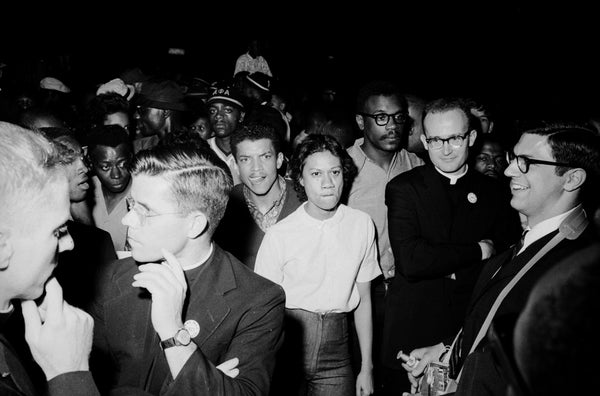
Chairman of the Cambridge Non-Violent Action Committee Gloria Richardson marches for equal rights for Black people in America. In the 1960s, the Cambridge Movement fueled the fight against injustices and discrimination.
Gloria Richardson
Born May 6th, 1922, civil rights activist Gloria Hayes Richardson grew up surrounded by city life in Baltimore, MD. Later moving to Cambridge, Maryland during the Great Depression, her family moved in with her grandfather, who had a large influence in the town was the only Black member of the city council.
After attending college at the age of 16, Richardson graduated with a degree in sociology and began work as a civil service employee for the federal government during World War II. However, upon her return to Cambridge, Maryland after the war, she was refused by the department, who denied work for her and any other Black social worker.
Matters grew worse as the Black unemployment rate grew to 40 percent and segregation increased in the 60s, which was around the time when the civil rights movement hit Dorchester County and the city of Cambridge, as well as when Richardson joined the Freedom Riders.
Later taking lead of the movement in Cambridge, Maryland, Richardson frequently organized sit-ins in movie theaters, bowling alleys, and restaurants to fight against segregation, job equality, and voter registration. After years of protest, the movement was met with a town treaty in 1963, making the Cambridge Movement a staple in the progress towards civil rights for Black people in America.
Photo by Paul Sequeira, Fair use image via BlackPast.org
Fred Hampton was a Black revolutionary socialist and activist who served as the chairman of the Illinois chapter of the Black Panther Party and deputy chairman of the national Black Panther Party. He was a leading force in the fight for Black liberation, advocating for an international proletarian revolution against capitalism, imperialism, fascism, colonialism, and white supremacy by all means necessary. “You can jail revolutionaries, but you can’t jail the revolution,” Hampton said in “You Can’t Jail a Revolution” speech at a Black Panther rally.
Fred Hampton
Born on Aug. 30, 1948, Fred Hampton was a Black revolutionary socialist and activist who served as the chairman of the Illinois chapter of the Black Panther Party and deputy chairman of the national Black Panther Party.
When he was 10 years old, his family moved to Maywood, a Chicago suburb, where he would attend Irving Elementary School and Proviso East High School. Leading his high school’s Interracial Committee, Hampton also protested the nominations of only white girls to run for homecoming queen, advocating for the inclusion of Black girls. After graduation, he then went on to study pre-law at Triton Junior College, also attending Crane Junior College (now Malcolm X College) and the University of Illinois at Chicago Circle.
In 1968, Hampton helped found the Illinois chapter of the Black Panther Party, where he served as chairman, organizing rallies and promoting mutual aid by establishing free breakfast programs and health clinics. He also founded the Rainbow Coalition alongside William “Preacherman” Fesperman and José Cha Cha Jiménez. The coalition was a multicultural, multiracial joint political organization, including the Black Panther Party, The Young Patriots, and the Young Lords, that engaged in action against poverty, corruption, police brutality, substandard housing, and more. The individual groups supported each other at protests, strikes, and demonstrations where they had a common cause.
Throughout the Black Panther Party’s active years, the FBI and police targeted and threatened the organization, its leaders, and members, including founders Huey Newton, Bobby Seale, Elbert Howard, as well as prominent figure Angela Davis. Shortly before Hampton’s assassination, Newton and Seale were out of commission after being targeted by the police and facing criminal charges. This elevated Hampton to be a national spokesman for the party prior to his death.
Hampton was a leading force in the fight for Black liberation, advocating for an international proletarian revolution against capitalism, imperialism, fascism, colonialism, and white supremacy by all means necessary. The United States government labeled him a “radical threat,” with FBI Director J. Edgar Hoover calling the Black Panthers “the greatest threat to the internal security of the country,” targeting and threatening Hampton and other revolutionaries. The FBI aimed to destroy the Panthers and their mutual aid programs, as well as prevent the rise of a “messiah” who would unify Black people in the fight for liberation.
Under the direction of Hoover, the FBI and local Chicago police assassinated Hampton on Dec. 4, 1969. The FBI coerced teenager William O’Neal into being an informant, having him infiltrate the Black Panther Party and eventually poison Hampton’s drink with a sleeping drug on the night of Dec. 3. FBI and police later raided Hampton’s apartment, murdering both him and Black Panther Defense Captain Mark Clark. The police fired nearly 100 times, while only one bullet of defense came from inside the apartment.
The FBI and police’s violence against the Black Panthers continue after Hampton’s death, with the party ceasing operations in 1982 due to the smear campaigns, infiltrations, wiretapping, coerced informants, and assassinations committed by the FBI and police.
Hampton’s legacy lives on as does the fight for Black liberation. His story has been told in the 1971 documentary The Murder of Fred Hampton, Ryan Coogler’s Judas and the Black Messiah, which comes out in 2021 and stars Daniel Kaluuya as Hampton, and the book The Assassination of Fred Hampton: How the FBI and the Chicago Police Murdered a Black Panther by Jeffery Haas. Kelvin Harrison Jr. also portrays Hampton in the 2020 movie The Trial of the Chicago 7. Hampton’s speeches can also be listened to in the Power to the People: The Black Panther Speeches audiobook.
University of Dayton, Public Domain
Eunince Kathleen Waymon, known professionally as Nina Simone, was a socialist, Black nationalist, revolutionary, civil rights activist, singer, songwriter, musician, and more, whose art spanned the musical genres and styles of pop, classical, blues, jazz, folk, gospel, and R&B. “It was always Marx, Lenin, and revolution – real girl’s talk,” Nina Simone said in her autobiography, I Put a Spell on You: The Autobiography of Nina Simone.
Nina Simone
“It was always Marx, Lenin, and revolution – real girl’s talk,” Nina Simone said in her autobiography, I Put a Spell on You: The Autobiography of Nina Simone.
Born on Feb. 21, 1933 in Tryon, NC, Eunince Kathleen Waymon, known professionally as Nina Simone, was a socialist, Black nationalist, revolutionary, civil rights activist, singer, songwriter, musician, and more, whose art spanned the musical genres and styles of pop, classical, blues, jazz, folk, gospel, and R&B.
The “High Priestess of Soul” was seen as a prodigy since she was three years old, the age she started playing piano. Simone’s parents Mary Kate and John Divine Waymon saw her talents as a God-given gift of music.
With her mother being a Methodist minister and her father being a handyman and preacher, Simone was raised in the church and played piano in her mother’s ministry. Simone attended Allen High School for GIrls in Asheville, NC with the help of scholarship funds established by her music teacher.
Following graduation from high school in 1950, she spent the summer at The Juilliard School, learning from Carl Friedberg and preparing for her audition to the Curtis Institute of Music in Philadelphia. She suspected that her application was denied because of racial prejudice.
She continued on in the art world, taking piano lessons with Curtis professor Vladmir Sokoloff, working as a photographer’s assistant, becoming an accompanist at Arlene Smith’s vocal studio, and teaching piano from her home. She also began performing at the Midtown Bar and Grill in Atlantic City, NJ, where singing as well as playing the piano increased her weekly salary to $90. It was 1954 when she adopted the name “Nina Simone”, derived from a nickname given to her by a boyfriend and the French actress Simone Signoret. One of the reasons she went by a different name was to go undetected from her mother, who disapproved of her playing and singing secular music. While performing at the bar, she gained a loyal fan base.
In 1958, Simone adapted the song “I Loves You, Porgy” by George Gershwin, which would be featured on her debut album Little Girl Blue in 1958 with Bethlehem Records. After her album’s success, she signed a contract with Colpix Records, who she would record multiple studio and live albums with, including the live album Nina Simone at Town Hall. A favorite musician at Greenwich Village, Simone performed pop music in order to make money to continue her classical training.
In 1964 she began to talk more about racial identity in her music, such as with the songs “Brown Baby” on her album Nina at the Village Gate, “Mississippi Goddam” in Nina Simone in Concert, and “Four Women” in Wild is the Wind, all of which were released under Philips Records.
Along with songs like “Four Women”, which she made to inspire Black women to define eurocentric beauty and identity standards that were imposed on them, Simone performed and spoke at civil rights events, including the Selma to Montgomery marches. Her view on Black liberation aligned more with Malcolm X, her Mount Vernon neighbor, than Dr. Martin Luther King Jr.’s non-violent approach, as she believed in revolution by any means necessary and Black nationalism.
With Weldon Irvine, Simone created “To Be Young, Gifted and Black” a song from the unfinished play of the same name by Lorraine Hansberry, which she performed live on her Black Gold album and later released a studio recording as a single. Aretha Franklin did a later rendition of the song for her 1972 album Young, Gifted and Black, as did Donny Hathaway for his album Everything is Everything.
In 1970, Simone moved to Barbados, and when she returned to the U.S., there was a warrant for her arrest after she protested paying taxes in opposition to the Vietnam War. She then moved back to Barbados and later to Liberia with her friend and fellow singer-activist Miriam Makeba. She left her daughter Lisa Simone Kelly (born Lisa Celeste Stroud), who she had with former husband Andy Stroud, in Mount Vernon, though they would reunite in Liberia later on.
By 1974, Simone made her last album with the Radio Corporation of America (RCA) called It is Finished. With CTI Records, she released the Baltimore album in 1978, which featured songs like “Rich Girl” and “If You Pray Right”. Simone then released the Fodder on My Wings album in 1982 with Studios Davout.
Throughout the 1980s, she was a regular performer at Ronnie Scott’s Jazz Club, where she recorded Live at Ronnie Scott’s in 1984 in London. Eventually, she moved to Paris, France, where she performed at Aux Trois Mailletz, a small jazz club.
At the end of the 1980s, in 1988, Simone moved to the Netherlands. Her song “My Baby Just Cares for Me” resurfaced due to a Chanel No. 5 ad, leading her to re-release the song and earned a top spot on the UK’s NME singles charts. She bought an apartment a few corners away from her friend Gerrit de Bruin. A daily caretaker was hired for Simone, and she was diagnosed with bipolar disorder by a doctor De Bruin knew.
Moving to Amsterdam in 1991, Simone lived there for two years with friends and her caretaker. In 1993, she then settled in Southern France, where she recorded and released her final studio album A Single Woman. She battled breast cancer during her last years, passing away in her sleep at 70 years old on April 21, 2003 at her home in Carry-le-Rouet, France.
Simone is survived by her daughter Lisa, her art, and activism. All of her music can be streamed on every music platform, including Spotify and Apple Music. More on Simone’s life, career, and art can be found in the documentaries The Amazing Nina Simone and What Happened, Miss Simone?, as well as her autobiography I Put a Spell On You: The Autobiography of Nina Simone.
“Ida B. Wells” by US Department of State is licensed under CC BY-NC 2.0
Ida Bell Wells-Barnett was a Black journalist who is most known for her investigations into the violent lynching of Black people by white people through her journalism and was actively involved in the civil rights and suffrage movements. In 2020, Wells-Barnett received a posthumous Pulitzer Prize for “her outstanding and couregous reporting on the horrific and vicious violence against African Americand during the era of lynching.”
Ida B. Wells
Born enslaved in Holly Springs, MS on July 16,1862, Ida Bell Wells-Barnett was a Black journalist who is most known for her investigations into the violent lynching of Black people by white people through her journalism and was actively involved in the civil rights and suffrage movements.
Following their escape from enslavement after the Civil War, Wells-Barnett’s parents took an active role in politics during the Reconstruction Era and enforced the importance of education to their kids. Wells-Barnett attended Rust College before dropping out at 16, when her parents died of the yellow fever outbreak. As the caretaker, Wells-Barnett convinced a local school she was 18 and was hired as a teacher.
Wells-Barnett moved to Memphis, TN with her sisters to be with their aunt. During her time in Memphis, Wells-Barnett sued a train car company that threw her off a train for refusing to leave a car reserved for white women, even though she had purchased a ticket. She won 500 dollars in local court, but the ruling was overturned by the Tennessee Supreme Court.
This prompted Wells-Barnett to write an editorial and buy a share of Free Speech and Headlight, a Memphis newspaper, to advocate for the civil rights of Black people. Wells-Barnett also worked as a teacher in a segregated school, where she actively spoke out and criticized the schooling conditions that Black students and teachers were subjected to in Memphis.
After one of Wells-Barnett’s friends and two of the friend’s coworkers were lynched by a violent white mob, Wells focused her writing on anti-lynching, beginning to investigate into the violence inflicted onto Black people by white people. As a writer for the Memphis Free Speech, she wrote her findings and published an editorial campaign against lynching. White people responded with violent threats against her and Memphis Free Speech. As a result of her office getting destroyed by violent white people, who threatened her several other times, Wells-Barnett left Memphis and moved to Chicago, Illinois.
Wells-Barnett’s move did not silence her. In fact, she took her anti-lynching campaign to the White House as a call for change and traveled across the world to highlight the lynching and white violence against Black people in the United States. Wells-Barnett not only organized anti-lynching societies, but also other causes, such as centering Black women in the suffrage movement.
In 1895 she married Ferdinand L. Barnett, an attorney and newspaper editor for the Chicago Conservator. After adding “Barnett” to her last name, Wells-Barnett became one of the first married women to keep her maiden name.
Wells-Barnett continued working as an activist by co-founding the National Association for the Advancement of Colored People (NAACP) and the National Association of Colored Women (NACW), as well as creating the Alpha Suffrage Club.
On March 25, 1931 Wells-Barnett died due to kidney disease, but her political and social activism lives on through the numerous organizations that still fight to this day for Black people’s civil rights and liberation. In 2020, Wells-Barnett received a posthumous Pulitzer Prize for “her outstanding and couregous reporting on the horrific and vicious violence against African Americand during the era of lynching.”
Stacey Abrams
Stacey Abrams is a politician, voting rights activist, and bestselling author who has made an immeasurable impact on voting rights reform in Georgia and the deep south.
Born in Wisconsin in 1973 and raised in Atlanta, Abrams proved to be a talented politician from a young age. After graduating as the valedictorian of her graduating class, Abrams was hired as a typist for a congressional campaign and later promoted to speechwriter based on her performance straight out of high school, at the age of 17.
During her undergrad at Spelman college, she worked in the youth services department in the Atlanta Mayor’s office. She also interned at the U.S. Environmental Protection Agency and participated in protests to change the George state flag, which at the time bore the Confederate Battle Flag. She graduated in 1995 magna cum laude and then went onto study public policy at the University of Texas in Austin, where she earned a Master of Public Affairs. In 1999, she earned a Juris Doctor from Yale Law.
After law school, Abrams worked as a tax attorney for a number of years. She then turned her sights back to politics and in 2002, ABrams was appointed a deputy city attorney for Atlanta, Georgia. Shortly after, in 2004, Abrams ran for Georgia House of Representatives in Georgia’s 89th district, winning 51% of the vote.
During her time in Congress, Abrams worked on tax reform and is credited with single-handedly stopping the largest tax increase in Georgia’s history. Abrams served District 89 for six years before being nominated as the Democratic Party’s nominee for Georgia governor.
Abrams did not win the governor’s seat but instead spent the next few years battling voter suppression and fighting for voting rights for all Americans. In 2020, she announced the Fair Fight action, an organization dedicated to building voter protection in several states. Abrams’s efforts in battling voter suppression are largely credited with helping Georgia flip to a blue state in the historic 2020 presidential election, and then again in the 2021 run-off election that elected Jon Ossof and Reverand Raphael Warnock.
Abrams’s historic impact on the 2020 presidential election and on voter turnout has cemented her as a political force to be reckoned with. She is continuing her work in Georgia and in multiple states. You can find her political positions here.
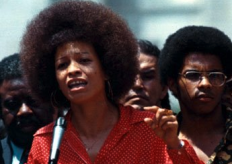
Growing up in a segregated Birmingham, in a part of town referred to as “Dynamite Hill” in reference to the numerous attacks committed by the Klu Klux Klan, much of Davis’s childhood was plagued by the horrors of racism and bigotry. Her activism started at a young age.
Angela Davis
Born in Alabama in 1944, Dr. Angela Davis is one of the most influential Black activists and communists alive, known for her leadership during the Civil Rights movement of the 60s, her her efforts for the Black Panther Party and Che-Lumumba Club, and her numerous award-winning books on race, class, and gender theory, among other topics. A prominent activist, communist, educator, and author, Davis’s impact on activism and American history is undeniable.
Growing up in a segregated Birmingham, in a part of town referred to as “Dynamite Hill” in reference to the numerous attacks committed by the Klu Klux Klan, much of Davis’s childhood was plagued by the horrors of racism and bigotry. Her activism started at a young age, when she created inter-racial study groups as a highschooler. The group meetings were repeatedly broken up by local police, however, she kept pushing.
After high school, Davis went to study at Brandeis University in Massachusetts, choosing to study philosophy. Afterward, she moved to California for graduate school, which is when she joined numerous activist groups, including the Black Panthers.
In the 60s and 70s, Davis became a prominent voice in the Black Panther Party and created the Che-Lumumba Club, an all-Black chapter of the communist party. Davis was a strong supporter of prison abolishment and often spoke on the racist infrastructure of the American Prison System. Most of her time however was spent on building support for the Che-Lumumba club.
In 1970, Davis was implicated in the Soledad Brothers case, a botched attempted escape of three Black inmates at Soledad prison. John W. Cluchette, Fleeta Drumgo, and George Lester Jackson were accused of killing a prison guard, however, there was much controversy around the circumstances of the case. In August of 1970, Jackson’s brother made an attempt to help the three inmates escape but failed. Four people were killed, including George Lester Jackson.
Davis, a friend of Jackson’s, had the guns used in the shooting registered in her name and faced several charges of affiliation with the escape. After a lengthy trial, Davis was finally acquitted and found innocent of all of the charges.
Davis continued her activism work in the 80s as a college professor, however, was often denied positions due to her alignment and belief in communism. In 1980 she appeared on the US presidential ballot as the Communist party’s pick for Vice President but ultimately did not win.
Today Davis is an established activist and educator and has published several books, including Women, Race, and Class, Blues Legacies and Black Feminism: Gertrude Ma Rainey, Bessie Smith and Billie Holiday, Are Prisons Obsolete?, Abolition Democracy: Beyond Empire, Prisons, and Torture, The Meaning of Freedom: And Other Difficult Dialogues and Freedom Is a Constant Struggle: Ferguson, Palestine, and the Foundations of a Movement.
The New York Public Library Public Domain Collections
Marsha “Pay It No Mind” Johnson was a Black gay liberation activist who pioneered the movement for LGBTQ+ human rights. As long as gay people don’t have their rights all across America, there’s no reason for celebration,” Johnson said.
Marsha P. Johnson
Born in Elizabeth, New Jersey in 1945, Marsha P. Johnson was a Black gay liberation activist who pioneered the movement for LGBTQ+ human rights.
Some scholars say it is most accurate that Johnson was gender non-conforming, while others say Johnson was a transgender woman. Though, when people asked questions about Johnson’s gender, Johnson would refer to the “P” in “Marsha P. Johnson”, which stands for “Pay It No Mind”, and go on working for greater acceptance within the LGBTQ+ community for those who were transgender, non-binary, or identified with other genders.
Shortly after moving to New York City at the age of 17, Johnson became very involved with the Drag Queen scene in Greenwich Village and remains to this day an icon in Drag fashion and culture. Johnson’s performance work as a drag queen was oftentimes comedic and political, using the stage to make statements about AIDs, homophobia, and racism.
In 1969 after tensions continued to rise in the city, Johnson, along with two other prominent LGBTQ+ leaders at the time, Zazu Nova and Jackie Hormona, moved into the Stonewall Inn, a popular gay bar turned Drag stage. In June of that year, after weeks of intimidation led by homophobic groups, Johnson made the historic decision to throw a brick past the police line in front of the Stonewall, an action that kicked off what is now referred to as the Gay Revolution of the 70s.
The months that followed were filled with violent riots, but the leaders of the Stonewall held their ground. The following year, in June of 1970, Johnson channeled the energy from the Stonewall riots and led the first Gay Pride Rally. The rally would lead to the eventual historic sit-in at the Weinstein Hall at New York University, a rally at which Johnson was quoted saying, “Darling we want our gay rights now!”
The protests that started with Stonewall in June of 1969 and the Weinstein sit-in are historical milestones in the path to LGBTQ+ rights and set a precedent for the eventual protests during the AIDs crisis of the 80s. Johnson’s leadership during the early 70s helped form the movements during the AIDs crisis, and later on the fight for Gay marriage in the early 2000s.
After suffering an untimely death in 1992, Johnson’s life has been commemorated and celebrated through the decades, often referred to as “the true mother of Drag” and an icon in the LGBTQ+ community. A monument to Marsha P. Johnson and her legacy can be found in Dallas, Texas.
Today, Johnson’s legacy lives on through The Marsha P. Johnson Institute, which was created by Elle Hearns and works to uplift the transgender community with an emphasis on Black transgender women.
The first Black woman scientist to be employed at NASA, engineer Mary Jackson became an inspiration for many.
Mary Jackson
Born April 9th, 1921 in the city of Hampton, VA, American mathematician and engineer Mary Jackson became the first Black woman to work at NASA.
After graduating from college with a degree in both mathematics and physical science, Hampton started work as a math teacher in Maryland, and later became part of the National Advisory Committee for Aeronautics.
Segregated into the West Wing of the facility with other Black women, Jackson along with other employees were forced to use separate dining areas and bathrooms.
Despite this, her computing unit provided crucial data that would later be used in early space exploration for the United States.
After being denied management positions, she took on the role as manager of women’s programs at NASA until retiring in 1985.
It wasn’t until after her death in 2005 that her impact to the program became better known. Along with other workers, Jackson was an inspiration for books and movies, such as Margot Lee Shetterly’s book Hidden Figures, which was released as a movie the same year.
A communist, Black nationalist, journalist, community leader, feminist and more, read about political activist Claudia Jones in the first installment of Wingspan’s daily reports highlighting Black historical figures and their impact on the world.
Claudia Jones
Born in 1915 in Belmont, Port of Spain, Trinidad and Tobago, Claudia Jones was a communist, Black nationalist, journalist, community leader, feminist and more. At age eight, Jones moved to Harlem, NY with her family. She graduated high school, though her education was cut short after she was diagnosed with tuberculosis, which she would have for the rest of her life.
Following graduation, she worked retail jobs while writing a column called “Claudia Comments” for a Harlem journal. In 1936, 18-year-old Jones joined the Young Communist League USA. A year later, she became a member of the editorial staff for the Communist Party USA’s newspaper, The Daily Worker, and the following year rose to the Weekly Review editor. During World War II, the Young Communist League became American Youth for Democracy, of which Jones led its monthly journal, Spotlight. Throughout young adulthood, she grew in her writing, leading various communist publications.
Following the war, Jones became the executive secretary for the Women’s National Commission, secretary of the Women’s Commissions of the Communist Party USA, and would later take the same positions for the National Peace Council in 1952.
Her advocacy centered the liberation of Black women from the intersecting discrimination of racism, sexism, and classism that they face, as well as decolonization, anti-imperialism, civil rights, and gender equality. During the 1940s-50s was the second Red Scare, and the Federal Bureau of Investigation targeted radical activists like Jones. By May 1947, she was denied naturalization because of her political affiliations. It was 1955 when the U.S. government deported Jones to the U.K. Jones suspected that she was allowed in England rather than Trinidad because British officials did not want to send a “radical agitator” to a colony where locals were organizing.
”I was a victim of the McCarthyite hysteria against independent political ideas in the USA… I was deported from the USA because as a Negro woman Communist of West Indian descent, I was a thorn in their side in my opposition to Jim Crow racist discrimination against 16 million Negro Americans in the United States, in my work for redress of these grievances, for unity of Negro and white workers, for women’s rights and my general political activity urging the American people to help by their struggles to change the present foreign and domestic policy of the United States… I was deported because I urged prosecution of the lynchers rather than the prosecution of the Communists and other democratic Americans who oppose the lynchers and big financiers and war mongers, the real advocates of force and violence in the USA.” -Jones, Claudia Jones: Beyond Containment: Autobiographical
Jones continued her activism in the U.K, focusing on the West Indian immigrant community in London. In 1958, she founded the U.K.’s first major Black newspaper, the West Indian Gazette and Afro-Asian Caribbean News. With this platform, Jones organized the first Caribbean carnival in 1959, which is widely credited as the precursor of today’s Notting Hill Carnival.
Jones passed away at 49 years old after a heart attack caused by heart disease and the tuberculosis she had since childhood, which left her with irreparable lung damage. She was buried in Highgate Cemetery, North London in a plot to the left of the tomb of Karl Marx.
